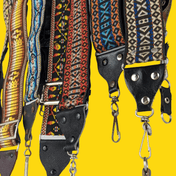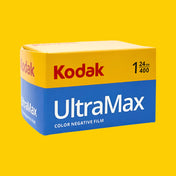In an era where most images are a mere click away, copyright laws and intellectual property rights have become more essential than ever. The digital age presents both opportunities and threats to photographers, ensuring their work remains protected and respected.
The Importance of Protecting Digital Content
With the surge of digital images and the ease of image search, many photographers find their work used without prior permission. This unauthorised use not only robs photographers of potential revenue but also diminishes the value of their intellectual property.
How Copyright Law has Evolved in the Digital Age
Copyright laws have seen multiple amendments to address the unique challenges posed by the digital realm. These changes aim to protect the rights of copyright owners while balancing the vast majority of internet users' needs.
Understanding Copyright in the Digital Realm
Navigating the world of copyright in the digital age can be daunting, but knowledge is a photographer's first line of defence.
What is Copyright Protection?
At its core, copyright protection grants photographers exclusive rights to their work. This includes the right to reproduce, distribute, and create derivative works based on their original content.
The Significance of Intellectual Property Rights for Photographers
Intellectual property rights ensure photographers have control over how their work is used and shared, enabling them to monetise their craft effectively.
Challenges of Copyright in the Digital Age
As the digital landscape grows, so do the challenges surrounding copyright protection.
The Rise of Image Theft and Copyright Infringement
Image theft has become rampant, with many photos being used for commercial purposes without the copyright owner's specific permission. This infringement undermines the hard work and creativity of professional photographers.
Difficulties in Tracing Unauthorised Use
With countless social media sites and digital platforms, tracing unauthorised use becomes a Herculean task. Many photographers are often unaware of where and how their work is being used.
The Mechanics of Copyright
Grasping the intricate details of copyright laws is pivotal for photographers keen on establishing clear boundaries and protections for their creative output. By delving deeper into these regulations, photographers equip themselves with the knowledge to prevent unauthorised reproductions, ensure proper attribution, and potentially monetise their work through licensing agreements.
In a digital age where image theft is rampant, understanding copyright becomes even more vital, offering photographers the tools and legal backing to defend and uphold the originality and integrity of their creations

The Digital Millennium Copyright Act (DMCA)
The DMCA is a vital piece of legislation that addresses copyright issues in the digital age, offering copyright holders a means to seek redress for unauthorised use.
Fair Use: A Double-Edged Sword
While fair use allows for limited use of copyrighted materials for non-commercial purposes, its boundaries are often blurred, leading to potential misuse.
Ways Photographers Can Protect Their Work
Protection begins with awareness and proactive steps.
Using a Copyright Notice and the Copyright Symbol
A visible copyright notice, often accompanied by the copyright symbol, acts as a deterrent for potential infringers and asserts the photographer's rights over the image.
Royalty Free vs Copyrighted Images
Understanding the difference between royalty-free and copyrighted images is crucial. While royalty-free images can be purchased for a one-time fee and used multiple times, copyrighted images come with specific usage restrictions set by the copyright owner.
The Role of Public Domain and Royalty Free Images
These types of images offer more freedom but come with their own set of challenges.
What Constitutes a Public Domain Image?
Images in the public domain aren't protected by copyright laws, meaning they can be used by anyone without seeking permission.
The Allure of Royalty Free Images for Internet Users
For many internet users, royalty-free images are an attractive option, providing high-quality photos without the hassle of obtaining permission or paying recurring fees.
Legal Recourse and Remedies
When copyright is breached, what can photographers do?
Legal Action and Its Implications
Taking legal action against copyright infringement can be complex, but it's often necessary to uphold a photographer's intellectual property rights.
The Importance of Seeking Permission
For those wanting to use an image, always seek permission. Not only is it the legal route, but it also respects the hard work and creativity of photographers.
Copyright protection in the digital age is a nuanced affair. Photographers must stay informed, vigilant, and proactive to ensure their work remains undiluted and valued in the vast digital landscape.



















